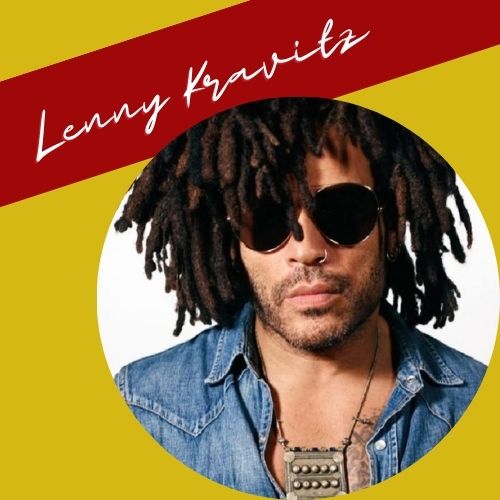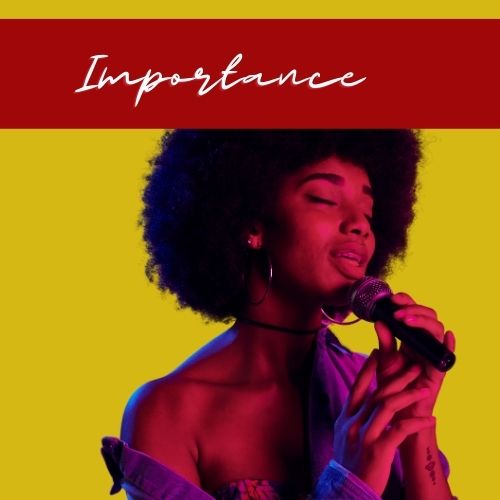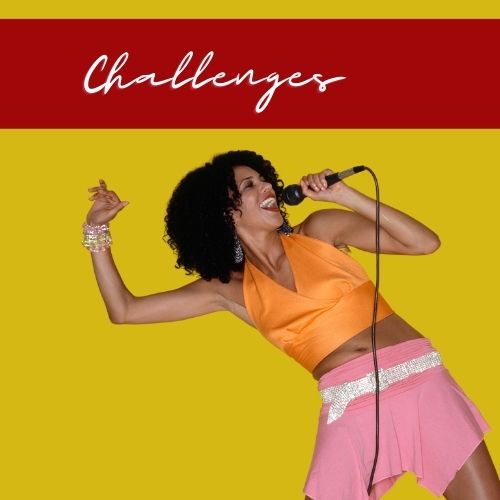We’re here to provide you a subject that’s near and dear to our hearts because we know you’re here because you’re a music enthusiast.

Having been a part of music history for millennia, dreadlocks have come to represent freedom, creativity, and self-expression. This article aims to study the relationship between dreadlocks and music and highlight the most influential dreadlocked vocalists.
The History of Dreadlocks in Music

A vast and diverse history of dreadlocks cuts across continents and civilizations. Dreadlocks have a long history, dating back to ancient civilizations like Egypt and Greece, where they were revered as a mark of piety and holiness. Dreadlocks originated in African culture and were historically worn as a badge of heroism and valor by warriors and religious men.
Dreadlocks were and still are a significant component of African spirituality and cultural identity. They served as a reminder of their cultural traditions and heritage. They served as a symbol of resistance to colonialism and enslavement.
Since they have been around long, dreadlocks have influenced various musical genres, including reggae, soul, R&B, and hip-hop. As the “King of Reggae” Bob Marley was among the first artists to popularise dreadlocks and make them a representation of the Rastafarian cause.
Top Dreaded Singers Who Rock the World
Let’s take a look at some of the top dreaded singers who have rocked the world:
1. Bob Marley

Bob Marley was a renowned reggae performer and songwriter who profoundly influenced the music industry and popular culture. Bob Marley was most well-known for his dreadlocks, which he wore as a representation of his Rastafarian religion. Based on the idea that Ethiopian Emperor Haile Selassie I is divine, Rastafarianism is a religion that has its roots in Jamaica. The Rastafarian culture places a lot of emphasis on dreadlocks, which stand for the embrace of natural values and rejection of materialism.
Bob Marley’s songs frequently addressed social and political justice, peace, and love issues. His music was firmly anchored in Rastafarian philosophy. He was an ardent supporter of the rights of the underprivileged. He employed the persuasive medium of music to promote his message of hope and harmony.
2. Lauryn Hill

Lauryn Hill is a gifted singer, songwriter, and rapper who first gained notoriety as a member of the well-known hip-hop group The Fugees in the late 1990s. Lauryn Hill was renowned for her strong voice, assured rapping, and aptitude for fusing several musical genres into her work. She was famous for wearing dreadlocks representing her cultural history and unique identity.
Dreadlocks are an essential aspect of Lauryn Hill’s legacy and have become a defining feature of her appearance. She is one of her generation’s most admired and regarded artists because of her talent, passion, and dedication to changing the world.
3. Damian Marley

The youngest son of renowned reggae singer Bob Marley is the reggae musician Damian Marley. His smooth and soulful reggae sound, combining elements of hip-hop, dancehall, and Rastafarian spirituality, makes him the most well-known. Damian Marley’s music is distinguished by his firm, soulful voice, insightful lyrics, and aptitude to fuse several musical genres into his compositions. He is renowned for his socially conscious lyrics and dedication to social justice. He has utilized his platform to spread awareness of problems like environmental damage, inequality, and poverty.
Damian Marley is well-known for several things, including his dreadlocks, which he has had since he was a young adult. Marley views his dreadlocks as a representation of his adherence to Rastafarian spirituality and ties to his cultural past.
4. Erykah Badu

Soul, jazz, and hip-hop combine in Erykah Badu’s music, distinguished by her deep, powerful voice, thought-provoking lyrics, and ability to incorporate several musical genres.
Dreadlocks, which Erykah Badu has worn from the start of her career, are among the things for which she is most well-known. Dreadlocks are more than simply a hairdo for Badu; they represent her connection to the natural world and her cultural history.
5. Lenny Kravitz

Lenny Kravitz has been making waves in the entertainment industry as a multi-talented musician, composer, and actor. Lenny Kravitz’s voice, which is strong and soulful, defines his music. He has a reputation as one of the best live performers of his time because of his exhilarating and thrilling live performances.
Lenny Kravitz’s dreadlocks, which he has worn since the start of his career, are among his most recognizable features. Dreadlocks represent Kravitz’s cultural identity and his love of a wide variety of musical genres. He is one of his generation’s most revered and admired artists due to his brilliance, passion, and dedication to his profession.
The Influence of Dreadlocks on Music

Dreadlocks are a significant expression of African history and the continent’s rich cultural heritage. Dreadlocks are a common way for musicians to pay homage to their cultural heritage and celebrate their African roots.
Dreadlocks are a familiar emblem of non-conformity and are connected to counterculture groups. Dreadlocks are a popular technique for many musicians to express their originality and inventiveness while rejecting traditional culture.
Dreadlocks are a means for people to express their individuality and rebel against social standards. These haircuts are influential in the music industry and have become vital symbols of African origin, counterculture, and freedom.
The Connection Between Dreadlocks and Music Genres

1. Reggae Music
Dreadlocks and reggae music are closely related and have roots in Rastafarian culture. Founded in Jamaica in the 1930s, Rastafarianism is a religious and cultural movement that has significantly influenced both reggae music and the way that many people wear their hair.
Dreadlocks are viewed as a symbol of independence, sturdiness, and spiritual awareness in the Rastafarian community. They are frequently worn as a declaration of one’s affiliation with the Rastafarian religion and as a rejection of the established cultural norms.
Reggae music originates in Jamaica and is renowned for its easygoing rhythm, upbeat melody, and uplifting, socially conscious lyrics. Reggae musicians frequently use their music as a platform to express their political and cultural views, singing about topics like love, peace, equality, and justice.
The dreadlocks worn by many reggae musicians, including Bob Marley, have come to represent the genre. These musicians frequently display their support for the principles and ideals at the heart of the reggae movement by wearing their hair in a way that visually expresses their devotion to the Rastafarian culture.
2. Hip-Hop and Rap
Dreadlocks and hip-hop, and rap music share a deep relationship that shows their shared cultural and racial origins. Rap and hip-hop music first appeared in the South Bronx in the 1970s. It was heavily influenced by Latinx and African-American cultures. Dreadlocks were frequently worn by the early pioneers of hip-hop and rap music as a representation of their ethnic background and as a means of expressing their political opinions.
Dreadlocks have remained a well-liked hairdo among numerous hip-hop and rap performers throughout history. The dreadlocks of several hip-hop and rap musicians, like Wu-Tang Clan, Kendrick Lamar, and Nas, are well-known and frequently use their hair to represent their political and cultural identities.
The hip-hop and rap communities have adopted dreadlocks as a fashion statement in addition to their cultural and political significance. Dreadlocks are frequently seen as an essential component of this fashion-forward look. Many artists and lovers of the genre are renowned for their distinctive and inventive styles.
3. Soul and R&B
Blues, gospel, and jazz are a few African-American musical styles that have influenced soul and R&B music. The vocals in the song are noted for being emotive and strong. At the same time, the arrangements are known for being sophisticated and soulful.
Dreadlocks have remained a well-liked hairdo among many musicians and fans of the soul and R&B genres. Erykah Badu, Lauryn Hill, and India.Arie is just a few soul and R&B performers who are well known for their dreadlocks and frequently use their hair to represent their political and cultural identities.
Dreadlocks have become a fashion statement within the soul and R&B communities in addition to the cultural and political connections. Dreadlocks are frequently seen as an essential component of this fashion-forward look. Many artists and lovers of the genre are renowned for their distinctive and inventive styles.
The Importance of Dreadlocks in the Music Industry

In the music industry, dreadlocks are a significant symbol of acceptance and tolerance. Dreadlocks are a popular way for many musicians to express their individuality and pride in their culture and beliefs. Musicians are fostering acceptance and tolerance inside the industry and outside of it by displaying their dreadlocks.
Dreadlocks are crucial in creating musical diversity. Dreadlocks highlight the rich cultural diversity of different performers by emphasizing their varied upbringings and life experiences.
For many performers, dreadlocks convey a message of empowerment. Musicians are spreading a message of self-love and strength to their fans and following them by embracing their individuality and dreadlocks. Musicians empower their followers and push them to be proud of who they are through their music and sense of personal flair.
Challenges Faced by Dreaded Singers

Sadly, dreaded artists still confront difficulties despite the significant effect that dreadlocks have had on the music industry.
Due to their dreadlocks, dreaded singers frequently encounter racism and stereotypes. Because of their hairdo, which might be interpreted as a sign of counter-culture or defiance, they might be wrongly stigmatized or alienated.
Dreadlocks are misunderstood frequently, and some people need to be aware of these hairstyles’ cultural significance. This may cause misunderstandings or hostility towards people who wear dreadlocks, particularly musicians.
Rastafarianism is frequently associated with dreadlocks, yet many myths surround this religion. For instance, some individuals might presume that all Rastafarians take drugs or are criminals, which is just not the case. This may cause people to have unfavorable opinions of Rastafarian musicians, even those who wear dreadlocks.
We must make an effort to increase acceptance of dreadlocks and the cultures and beliefs that surround them.
Frequently asked Questions (FAQs)
Who is the famous singer with long dreads?
One famous singer known for their long dreadlocks is Bob Marley, a Jamaican reggae artist and cultural icon.
Who was the 80s singer with dreads?
There were several popular singers in the 80s who rocked dreadlocks, including Grace Jones, Peter Tosh, and Bunny Wailer.
Who are people famous with dreads?
Many people, from musicians to actors to athletes, have made dreadlocks a signature part of their look. Some famous people with dreads include Bob Marley, Lenny Kravitz, Lauryn Hill, and Whoopi Goldberg.
What band has the guy with dreads?
There are many bands with members who wear dreadlocks, but one that comes to mind is Steel Pulse, a British reggae band known for their socially conscious lyrics and high-energy performances.
Who started wearing locs?
The origins of dreadlocks can be traced back to various cultures throughout history, but in modern times, it is commonly associated with Rastafarian culture. The exact origin of who started wearing locs is unclear, but many credit Bob Marley and the Rastafari movement with popularizing the hairstyle.
What bands have dreads?
Many bands across various genres have members who wear dreadlocks. Some examples include Tribal Seeds, Rebelution, Soja, and 311
Who is the reggae artist with long dreads?
There are many reggae artists with long dreadlocks, but one famous example is Ziggy Marley, son of Bob Marley and a successful musician in his own right.
Who is the black reggae singer with dreads?
Again, there are many black reggae singers with dreads, but a few notable examples include Peter Tosh, Burning Spear, and Black Uhuru.
Now, It’s Your Turn!
In conclusion, dreadlocks have had a significant influence on the music industry. They have been a crucial representation of empowerment, variety, and acceptance. These styles continue to be important in influencing the music scene despite the difficulties faced by dreaded singers.
As more and more musicians embrace their dreadlocks and the cultural legacy connected to these hairstyles, the future appears promising for the despised vocalists. We can anticipate seeing even more incredible performers with dreadlocks who continue to rock the world as long as there is acceptance and tolerance.
Keep up the dreadlock legacy by continuing to honor and support these outstanding musicians!
Pin It!


